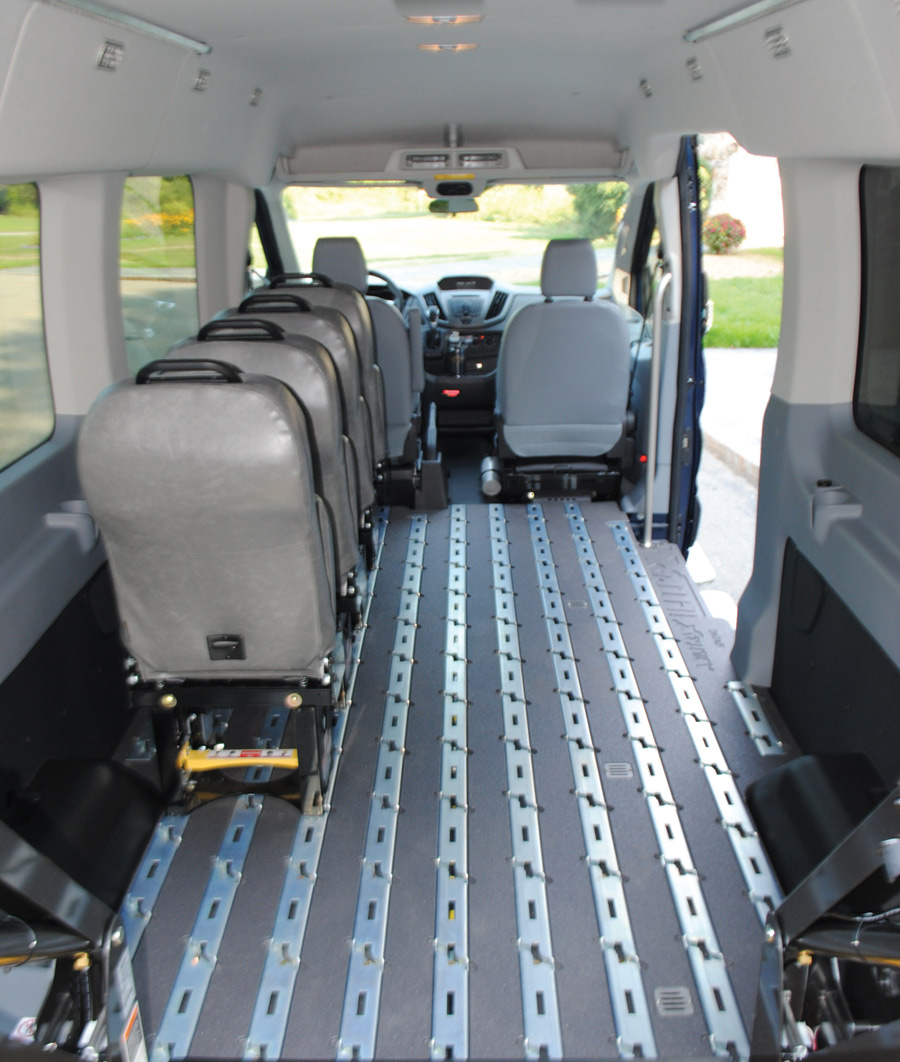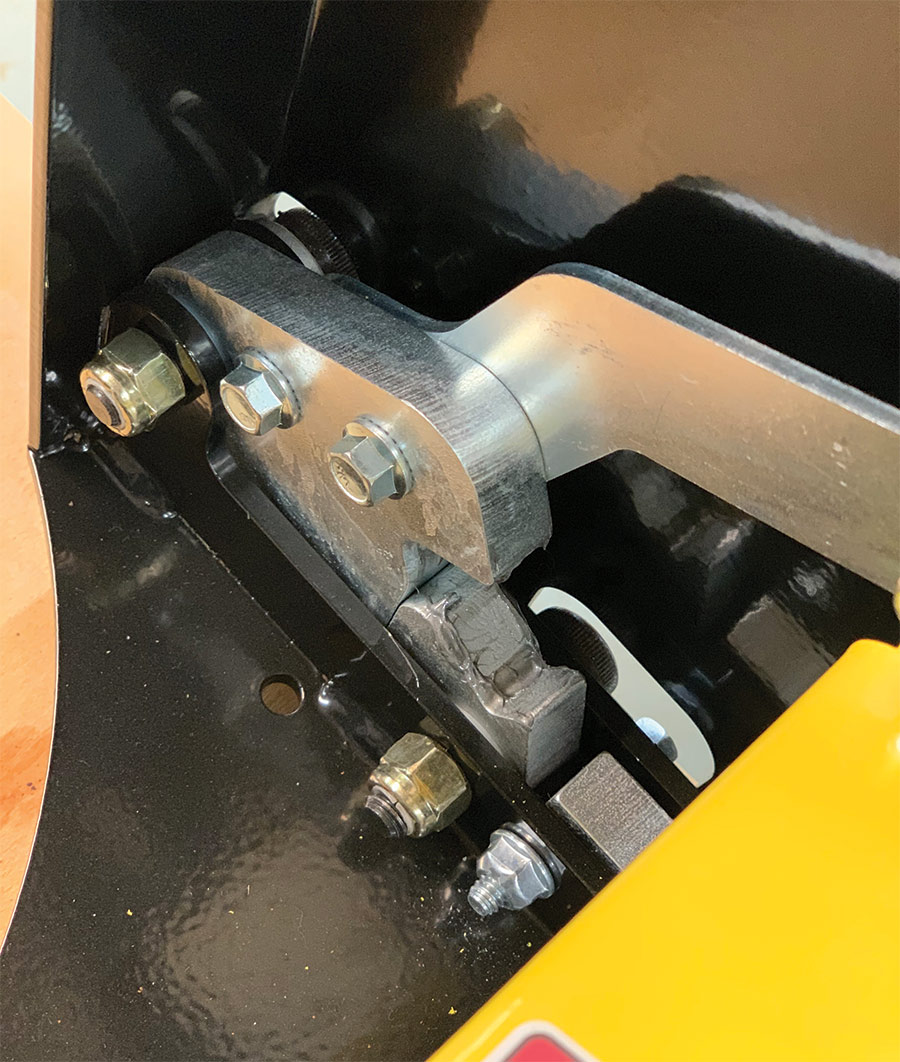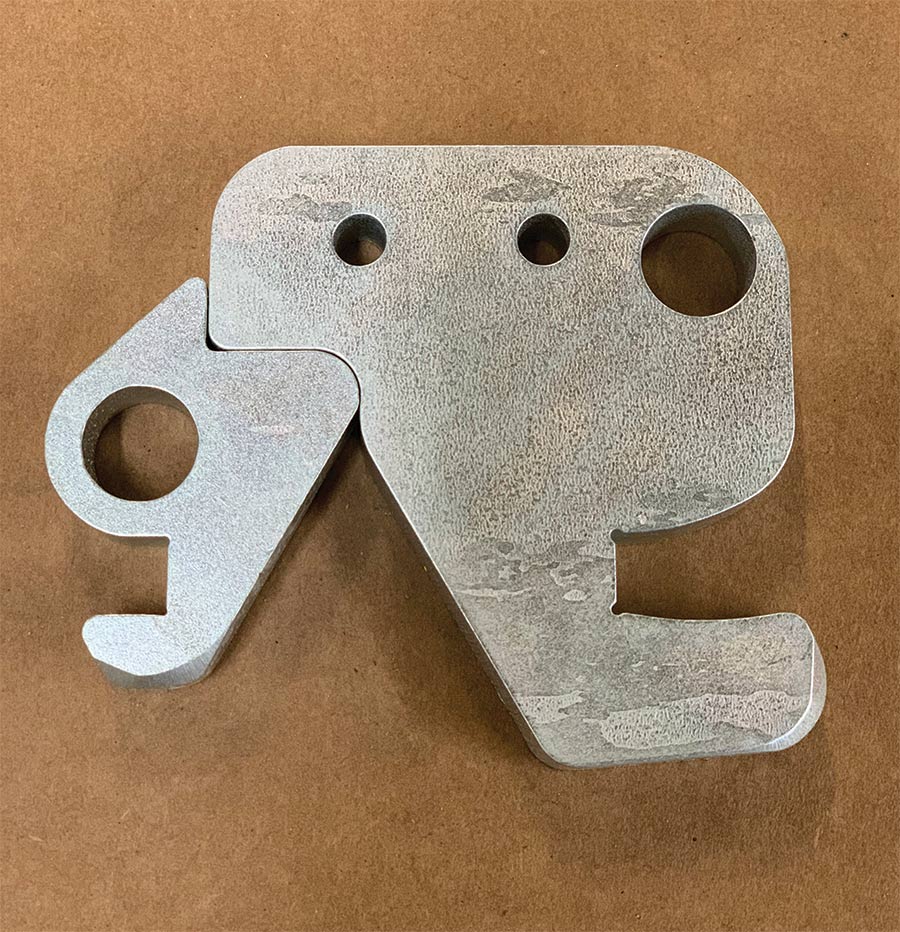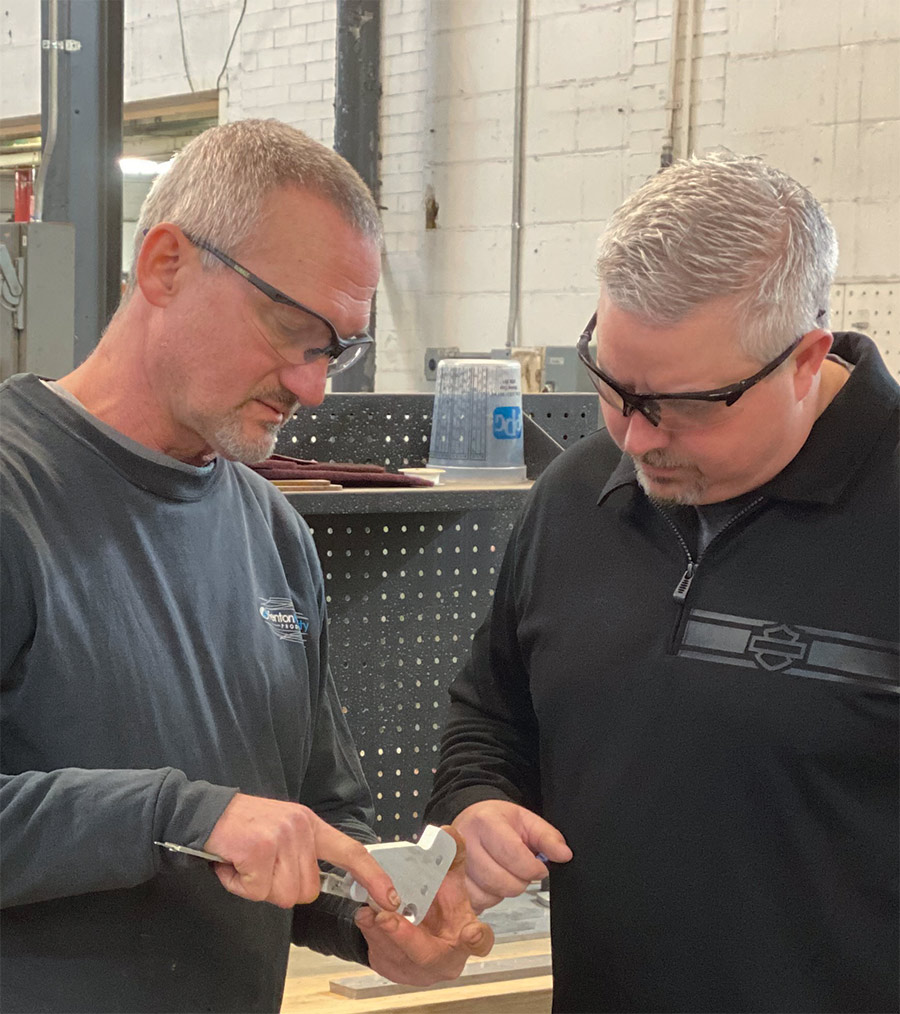n Fenton Mobility Products Inc.’s world, a latch is the most critical component in seat configurations for vans and other vehicles equipped to accommodate wheelchairs. High-precision waterjet cutting with the right abrasive makes it possible to achieve the necessary quality.
Fenton Mobility Products designs and manufactures seat bases that ensure wheelchair passengers’ safety in vehicles. The bases contain the latches that attach to Fenton’s specialized AbiliTrax rail system in vehicles like the Ford Transit van, the RAM Promaster and the Mercedes Benz Sprinter. Fenton specializes in commercial applications for state agencies, public transportation and group homes where longevity, durability and versatility are of the utmost importance along with safety and comfort for passengers.
“The latch is the critical component of this assembly,” says Scott Fenton, president and one of the three owners of the family owned business. “That is the key ingredient. Without the latches, everything else is just a failure.”


A laser process has a heat effect of its own, which can cause quality issues. The mere geometry of the latches makes cutting by waterjet the better process, according to Fenton. The latches have small radiuses in the corners, for example, and a waterjet’s speed can be slowed in those corners to improve the quality of the cut, he explains. Laser cutting, on the other hand, can create a crack zone that can lead to latch failure.
 The vehicles we ship weigh between 7,000 and 8,000 lbs. Each one of our seats could literally pick the vehicle up.
The vehicles we ship weigh between 7,000 and 8,000 lbs. Each one of our seats could literally pick the vehicle up. 

The Adirondack garnet is used to cut carbon and stainless steels up to 1½ in. thick, aluminum and even flooring material. The abrasive is versatile and gives the precision and efficiency needed, according to Fenton.

“The stress just pushes right to the rail and the critical latches,” Fenton says. “Not only that, if there is a seat within 12 in. of another seat in the vehicle, they have to be tested simultaneously. We typically test three seats next to each other, bringing test loads to 22,000 lbs. The vehicles we ship weigh between 7,000 and 8,000 lbs. Each one of our seats could literally pick the vehicle up.”
On Fenton’s seats, the belts are all connected to the seats so those loads transfer all the way down to the latches. The seats sit independently inside the vehicle. There is no belt coming off the wall so all those loads are transferred directly to the latches.
Fenton’s products include multiple latches in most cases, such as its CAMLock-1 seat leg, which uses five; its CAMLock-2 uses four. An ordinary approach to manufacturing will not suffice.
“Barton’s Adirondack garnet has proven to be highly consistent and flows well,” says Fenton. “They are very knowledgeable and were even able to help us quickly troubleshoot a leaky hose issue to get us back to full operation quickly. They are a good business partner.”
www.barton.com.
www.fentonmobility.com.